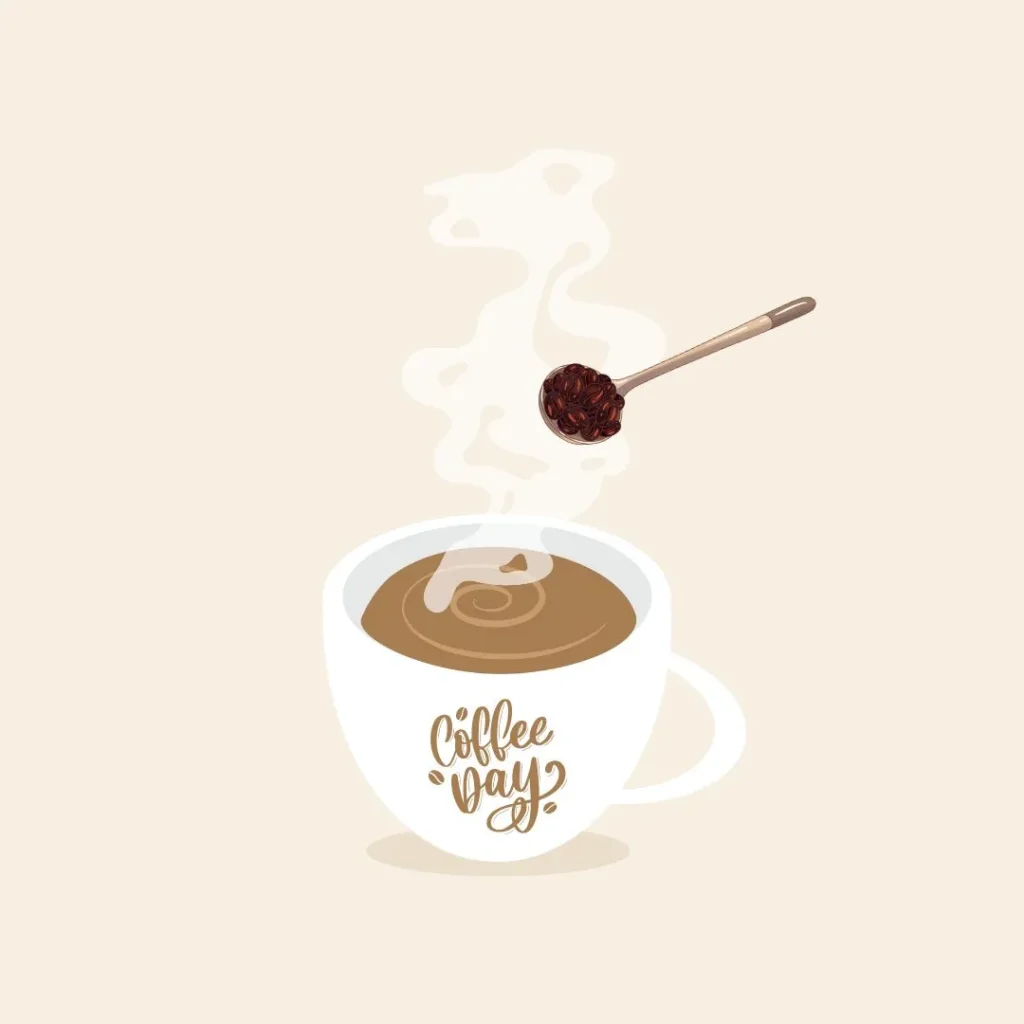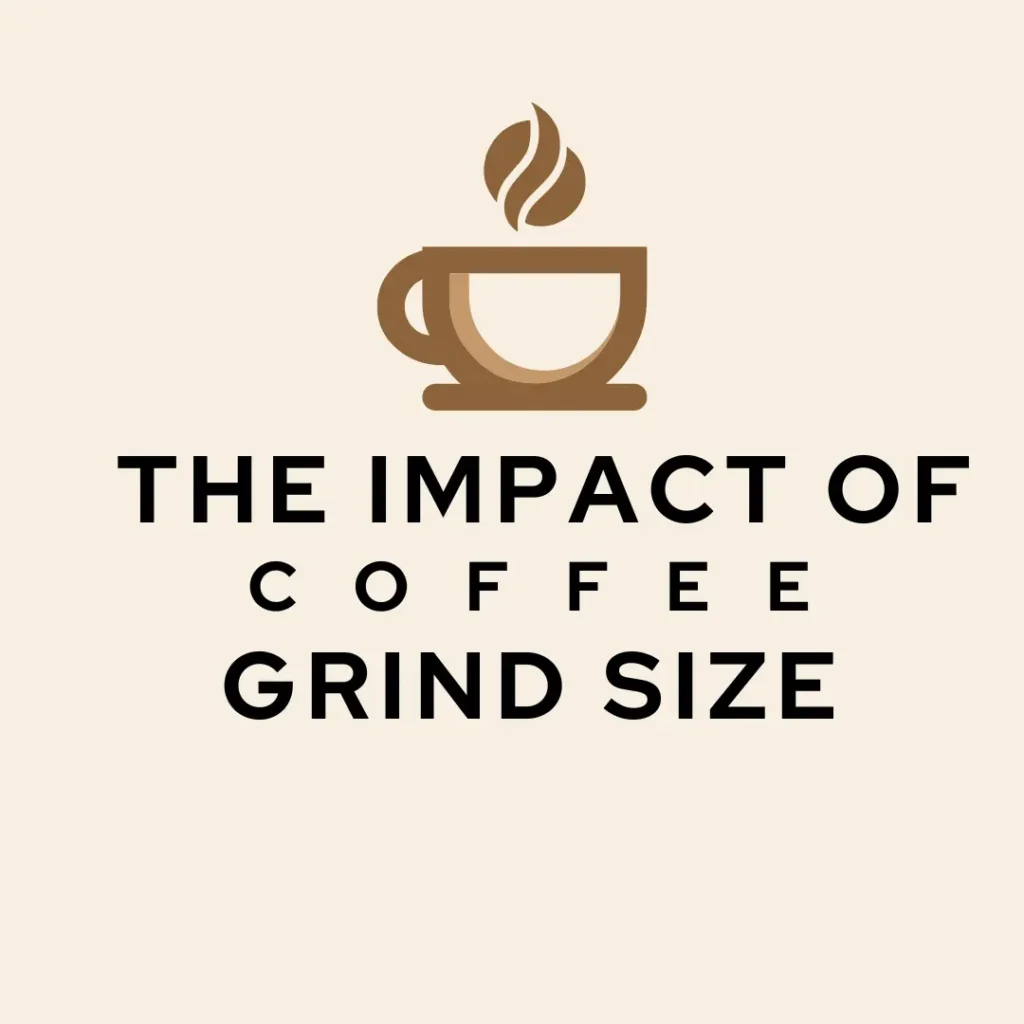Welcome to Wellbeingtribez. Coffee is a favorite drink for many people worldwide, and making the perfect cup is a skill many want to learn. A common question is, “How many scoops of coffee per cup?” This guide will give you a clear answer.
We have all faced an empty coffee pot and wondered how much coffee to use. Today, we will show you two simple ways to measure: the quick way with a scoop or tablespoon and the accurate way with a kitchen scale. This will help you brew better coffee.

The Golden Ratio: Your Coffee Guide
Think of the Golden Ratio as your go-to rule for brewing coffee. It’s often set at about 1:18 – that’s one part coffee to eighteen parts water.
But here’s the twist: this isn’t a fixed rule. It’s just a starting point. Your perfect cup could be at 1:15 or even 1:20. The fun part of coffee brewing is experimenting!
So, adjust the ratio to match your taste. If you like a stronger, bolder cup, use a bit more coffee. If you want something lighter and smoother, add more water. The Golden Ratio is just a guide, not a strict rule. Your ideal cup is as unique as you are.
Key Takeaways:
- Accurate Measurements Matter: Getting the right coffee-to-water ratio is essential for a great brew. Using kitchen scales or standard scoops can help you get it just right.
- Adjust for Brewing Method: Different brewing methods, like French Press or Espresso, need specific coffee-to-water ratios. You might need to adjust scoop sizes for the best results, so personalize based on your method.
- Grind Size is Key: The grind size of your coffee beans (whether coarse or fine) affects the flavor and extraction. Adjust the amount of coffee based on the grind.
- Experiment for the Perfect Brew: Don’t be afraid to experiment with different coffee strengths, ratios, and roasts (light, medium, dark) to find what you like best.
- Avoid Common Mistakes: Stay mindful of mistakes like overpacking your scoop, inconsistent measurements, or not adjusting for different coffee types. This helps ensure a better coffee experience every time.
Why Are Coffee Measurements Important?
When someone says “scoop” of coffee, what comes to mind? A big heaping tablespoon? Maybe that old souvenir teaspoon?
Here’s the truth: precise measurements are crucial when making coffee. A standard scoop usually holds about 10 grams of coffee, but keep in mind that not all scoops are the same. The weight can vary depending on the coffee’s roast and grind. For example, a scoop of light roast coffee might weigh less than a scoop of dark roast because of density differences. So, remember to think in grams, not just volume, when measuring your coffee.
Coffee Ratios for Different Brewing Methods
Each brewing method has its own special way of bringing out the flavors, and the right coffee-to-water ratio plays a big role. Let’s break down the perfect ratios for each method.
French Press
For a French Press, you want a rich and full-bodied flavor. The ideal ratio is about 1:15 (coffee to water). That means one scoop (10 grams) of coffee for every 150 milliliters of water.
The French Press is quite forgiving, so you can adjust a little to your taste—add a little more coffee for a stronger brew, or less for something lighter.
| Servings | Coffee (grams) | Water (ml) |
|---|---|---|
| 1 | 15 | 225 |
| 2 | 30 | 450 |
| 4 | 60 | 900 |
| 6 | 90 | 1350 |
| 8 | 120 | 1800 |
| 12 | 180 | 2700 |
Drip Coffee Machine
Drip coffee is a daily favorite for many, and the perfect ratio here is 1:17. For a standard cup (about 240 ml), you’ll need about 14 grams of coffee, which is one and a half scoops.
When brewing a full pot, just keep the same ratio and scale up the amount.
| Servings | Coffee (grams) | Water (ml) | Brew Tip |
|---|---|---|---|
| 1 | 14 | 240 | Perfect for a single morning cup. |
| 2 | 28 | 480 | Great for two — ideal breakfast brew. |
| 4 | 56 | 960 | Family-size pot for a relaxed morning. |
| 6 | 84 | 1440 | For small gatherings or heavy drinkers. |
| 8 | 112 | 1920 | Keeps everyone caffeinated during brunch. |
| 12 | 168 | 2880 | Hosting a group? This batch has you covered. |
Espresso
Espresso is strong and concentrated, and it’s all about the shot. A single shot (about 30 ml) requires 7 grams of coffee, which is roughly two-thirds of a scoop.
The ratio here is much higher, around 1:4, because you’re extracting a lot from a small amount of water.
| Servings | Coffee (grams) | Water (ml) | Brew Tip |
|---|---|---|---|
| 1 | 7 | 30 | Perfect for a quick energy boost. |
| 2 | 14 | 60 | A double shot to kickstart your day. |
| 4 | 28 | 120 | Great for two espresso lovers. |
| 6 | 42 | 180 | Hosting guests? Everyone gets a shot. |
| 8 | 56 | 240 | Ideal for group espresso sessions. |
| 12 | 84 | 360 | Enough for a team or espresso tasting. |
Pour-Over
The pour-over method is for the coffee artist. The recommended ratio is 1:16, which means one scoop of coffee for about 160 ml of water.
Here, you can adjust the scoop size to make the coffee stronger or lighter, depending on your taste.
| Servings | Coffee (grams) | Water (ml) | Brew Tip |
|---|---|---|---|
| 1 | 16 | 250 | Ideal for a peaceful solo coffee moment. |
| 2 | 32 | 500 | Share a smooth cup with a friend. |
| 4 | 64 | 1000 | A perfect batch for a small gathering. |
| 6 | 96 | 1500 | Great for breakfast with family. |
| 8 | 128 | 2000 | Hosting brunch? This amount will impress. |
| 12 | 192 | 3000 | For serious coffee lovers or group brews. |
Cold Brew
Cold brew is perfect for hot days, and it uses a stronger ratio of 1:8 because it makes a coffee concentrate.
That’s two scoops per cup of water. But remember, you’ll dilute this concentrate when serving, so the final brew will be closer to a 1:16 ratio.
| Servings | Coffee (grams) | Water (ml) | Brew Tip |
|---|---|---|---|
| 1 | 20 | 160 | Small batch – ideal for a single glass of cold brew concentrate. |
| 2 | 40 | 320 | Enough to keep you refreshed for the day. |
| 4 | 80 | 640 | Great for prepping two to three servings in advance. |
| 6 | 120 | 960 | A nice weekend batch for a couple of cold brew lovers. |
| 8 | 160 | 1280 | Hosting guests? This makes a pitcher to chill. |
| 12 | 240 | 1920 | Perfect for storing a jug of concentrate in the fridge all week. |
Each brewing method has its own flavor profile, and experimenting with these ratios will help you find your perfect cup. Enjoy exploring!
Adjusting Coffee Ratios for Different Serving Sizes
Scaling your coffee ratio for different serving sizes is like tuning an instrument—it needs a bit of precision for the perfect result. Whether you’re making a single cup or brewing a large pot for a group, the key is maintaining the correct ratio while adjusting the total volume.
- Single Servings: For a single cup, start with the standard ratio (like 1:18 for drip coffee). Use one scoop (10 grams) of coffee for 180 ml of water. This gives you a balanced cup and serves as your baseline.
- Multiple Cups: When making more than one cup, simply multiply both the coffee and water in the same proportion. For instance, for four cups, use four scoops (40 grams) of coffee and 720 ml of water. The trick is to keep the ratio consistent across larger volumes.
Tips for Maintaining Consistency in Coffee Flavor
- Use a Scale: Guessing measurements can lead to inconsistent flavors. A kitchen scale helps you hit the exact amounts every time.
- Adjust for Taste: If your brew turns out too strong or too weak, tweak the ratio slightly. Add or reduce a few grams of coffee until it’s just right for your taste.
- Consistent Grind Size: This is especially important when you adjust serving sizes. A consistent grind ensures even extraction, whether you’re brewing one cup or four.
- Water Temperature: Keep it steady. The ideal range is 195°F to 205°F for most brewing methods. Too hot or too cold can affect the taste.
- Brewing Time: For methods like French press or pour-over, keep the brewing time consistent, even when brewing larger quantities. This might mean working in batches for bigger servings.
The Impact of Coffee Grind Size

how many scoops of coffee per cup
The grind size of your coffee beans plays a vital role in determining how your coffee will taste. It’s like the brushstroke of an artist – it shapes the final result. The size of the grounds affects everything from the flavor extraction to the strength of your brew.
- Finer Grinds: With a finer grind, more surface area of the coffee comes into contact with water, leading to a stronger extraction. This means you might need less coffee to reach the desired strength.
- Coarser Grinds: Coarse coffee grounds have less surface area, which means you might need more coffee to achieve the same intensity.
Adjusting Coffee Scoops Based on Grind Coarseness
- Finer Grinds (for Espresso): Since these grinds extract more flavor, you’ll need less coffee. If it feels too strong, try cutting back on the amount slightly.
- Coarser Grinds (for French Press): Coarse grounds extract less efficiently, so you’ll likely need to use more coffee to get a balanced brew. If your coffee is weak, increase the coffee amount.
- Medium Grinds (for Drip Coffee): These grinds are in the middle. Start with the standard ratio and tweak it to suit your taste.
Remember, these changes don’t need to be drastic. Small tweaks—like adding or removing a gram or two—can make a big difference. Experiment to find the perfect balance for your taste.
Experimenting With Strength and Flavor
Making adjustments to coffee ratios is a personal journey. Here’s how different roasts may require you to tweak your coffee strength:
- Light Roasts: These have subtle, complex flavors, so you may need to add more coffee to bring out their best qualities. If it tastes too delicate, don’t hesitate to increase the amount.
- Medium Roasts: These are a good balance and often work well with standard coffee ratios. They offer a combination of acidity and body, making them a good base for experimenting.
- Dark Roasts: Bold and intense, dark roasts already pack a lot of flavors. You might find that you need fewer scoops to get a strong, rich brew without overwhelming your taste buds.
Tools for Perfect Coffee Measurement
Precision is key when it comes to making great coffee, and a kitchen scale is your best friend in this. It’s all about consistency.
With a scale, you can measure your coffee down to the gram, ensuring your coffee strength and flavor stay just right every time. Small adjustments—like adding or removing a gram—can make a world of difference in taste.
Coffee Scoops and Measuring Spoons: The Art of Estimation
While not as precise as a scale, coffee scoops and measuring spoons offer a quick, handy way to measure coffee, especially when you’re in a rush.
A typical coffee scoop holds about 10 grams, but this can change depending on the grind and type of coffee. Using scoops and spoons is more of an estimation method—a good starting point when you’re ready to experiment with your brew.
Common Mistakes to Avoid With Coffee Ratios
Even small mistakes can affect the quality of your coffee. Let’s go over some common errors and how to avoid them:
- Overpacking the Scoop: Packing the scoop too tightly might seem like it will make your coffee stronger, but it can lead to over-extraction, which makes your coffee bitter.
Solution: Use a level scoop every time. If you want stronger coffee, add more scoops, not more coffee per scoop. - Inconsistent Scoop Size: Using different scoop sizes every time can make your coffee taste unpredictable.
Solution: Keep it consistent. Always use the same scoop and level it off. If possible, use a kitchen scale for better accuracy. - Not Adjusting for Different Coffee Roasts and Types: Every roast extracts differently, and using the same ratio for all types can lead to inconsistent flavor.
Solution: Adjust your coffee ratio depending on the roast. Lighter roasts may need a finer grind or more coffee, while darker roasts may need less coffee or a coarser grind.
By avoiding these mistakes and making small tweaks, you’ll be on your way to a more consistent and enjoyable coffee experience.
Final Thoughts About How Many Scoops of Coffee Per Cup?
Brewing the perfect cup of coffee isn’t just about following a set rule — it’s about discovering what tastes best to you. By understanding the basics of coffee-to-water ratios, grind sizes, and brewing methods, you can customize every cup to your liking. Whether you use a simple scoop or a precise scale, the real secret lies in consistency, small adjustments, and a little experimentation. Enjoy the journey of making your perfect brew, one scoop at a time!
FAQS About How Many Scoops of Coffee Per Cup?
We’ve covered everything you need to know about how many scoops of coffee per cup? If you still have any questions or need more tips, feel free to ask! Here are some commonly asked questions to help you even further.
How much coffee do I use for 4 cups?
How much coffee for four cups of coffee? Using the Golden Ratio, we know that if one cup takes 8.3g of coffee grounds, then 4 cups would need 33.2g. (The full calculation is that 5fl oz x 4 cups = 20fl oz, which equates to 600ml, and 600/18 gives 33g).
Does 1 serving mean 1 scoop?
Serving Size tells you how many scoops or grams comprise one serving. Please note that a serving size could be 1 scoop, 2 scoops, or ½ scoop, so pay close attention, as on the nutrition table, the nutrition information will be displayed as either per serving, per 100 grams, or both!
What is the best combination for coffee?
Coffee and cake, cookies, chocolate, and pastries of most varieties work well. Coffee and donuts, of course, work well. Coffee and dried fruits work well, particularly raisins, prunes, or figs. Again, the varying characteristics of coffee (sweetness, acidity, bitterness) will all impact what foods pair well.
What Is a Serving Size of Coffee?
A typical serving size of coffee is around 6 ounces (180 ml) of water paired with one scoop (about 10 grams) of ground coffee. This standard works well for drip or pour-over styles. But remember—coffee is personal. Some prefer a large mug to sip slowly, while others go for a small, bold espresso shot. Adjust your serving size to fit your taste and mood.
How Do You Calculate Coffee Ratio?
It all comes down to the coffee-to-water ratio. The general rule is the golden ratio of 1:18 – one part coffee to eighteen parts water. Want a stronger brew? Try 1:15. Prefer something lighter? Go for 1:20.
Use a kitchen scale for precision: weigh your coffee in grams and multiply by the ratio to know how much water you’ll need. It takes a little math, but it makes a big difference in taste.
What’s the Average Number of Cups People Drink?
On average, most people enjoy about 2 to 3 cups of coffee per day, but this varies from person to person. It’s not just about how many cups—it’s about savoring each one. Whether you’re a one-cup-a-day sipper or a full pot enthusiast, what matters most is the joy it brings.

